M
O man, take care!
What does the deep midnight declare?
"I was asleep—
From a deep dream I woke and swear:
The world is deep,
Deeper than day had been aware.
Deep is its woe;
Joy—deeper yet than agony:
Woe implores: Go!
But all joy wants eternity—
Wants deep, wants deep eternity."
Zarathustra's Roundelay from Friedrich Nietzsche's 'Thus Spoke Zarathustra'
Selected for the Nederlandse Dansdagen/ Dutch Dance Days 2016
Chosen as 'Best Practice' by the Code Culturele Diversiteit
Première : 19 May 2016 - Korzo Theater
Tour: Autumn/ Winter 2016
Dancers: Samir Calixto, Thibault Desaules, Ivan Montis, Quentin Roger, Gino Taytelbaum
Light Design: Pavla Beranova
Costume Design: Min Li
Sound Design : Samir Calixto
Scenography: Samir Calixto & Pavla Beranová
M is a co-production of Korzo Producties & Nederlands Dans Theater
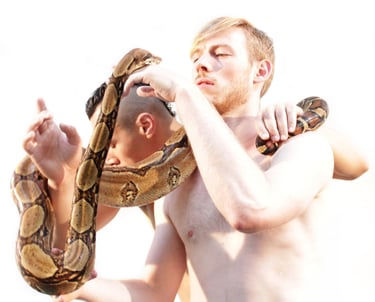

© Eyjólfur Eyjólfsson
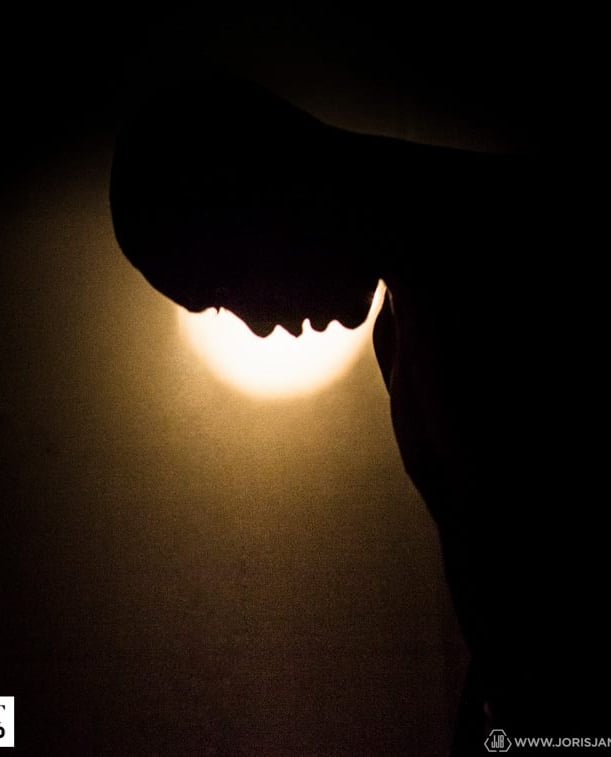




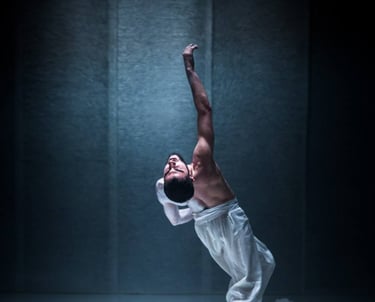
© Eyjólfur Eyjólfsson
© Joris-Jan Bos
M
For his performance M - in co-production with the prestigious Nederlands Dans Theater and Korzo Theater - Samir Calixto sought inspiration in the philosophical insights of Friedrich Nietzsche’s Also Sprach Zarathustra. Nietzsche set great store by the knowledge contained in the human body: “there is more wisdom in the body that in the deepest philosophy”. In M, Samir focuses on the power of transformation that the body possesses. Accompanied by a modern arrangement of music by Mahler, five male dances present their entire humanity on stage: their physical and mental effort and dedication, their extreme force and vulnerability, and their personal fortunes and paradoxes.
ABOUT THE PERFORMANCE
"A thoughtful performance about the intangible."
"Ultimately five men - or perhaps 'forest spirits' - share the stage. Thibault Desaules, Ivan Montis, Quentin Roger, Gino Taytelbaum and Calixto himself operate as a group, but also individually and in subsets, harmoniously, driven, or shivering and falling. Their wish is to create, but they are also continuously subjected to a force that is beyond and which masters them. Their movements seem to come from both in and outside. This leads to drug-like, intoxicating scenes that refer to Nietzsche's notions of the Apollonian and the Dyonisian, to instinct versus intellect and nature versus culture, plus the romantic appreciation of the sublime, the primal force that generates awe and admiration. (...)
M is a thematically strongly developed and well executed dance performance in which Samir Calixto deliberately connects modern dance, the nineteen-century fin de siècle, and a preconscious primal world in image, sound, and movement"
"Samir Calixto opens a fascinating universe in 'M'."
"The dancers are at each other's mercy in battle, death and suffering. Like the trenches in the First World War, when 'Thus Spoke Zarathustra' was popular between the soldiers. (...) The catharsis in dance is also the best in the show. The athletic Samir Calixto himself, Thibault Desaules, Ivan Montis, Quentin Roger en Gino Taytelbaum; they are all wonderful dancers. At least they are used to great advantage by Calixto. His dance vocabulary, strongly from the midriff and the deep bending of the knees like in capoeira dance, has been well assimilated by the dancers. And precisely on a cue in the music, they move synchronously from the chaos like a flock of birds(...) A timeless no man's land in which lust and passion form the primal impulses of life."
"Power and vulnerability come together in a ritualistic dance."
"M creates a kind of dream world with paradisaical scenes, but also with nightmares. The images are stunning. The passionate dancers go to their extreme and take you into the world of unconscious where not all needs to be named. In the final scene, the snake comes back. It winds around the tree of life's branch and observes it all. How the shivering man slowly comes to rest. And finds stillness.
The sun goes down. And on Saturday night a lasting silence in the darkness comes long before the liberating applause. A wonderful compliment to an impressive show."
- Gooitsen Eenling/ Leeuwarder Courant
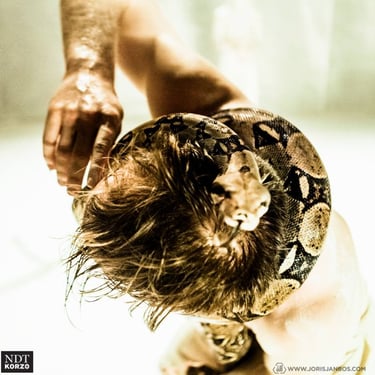

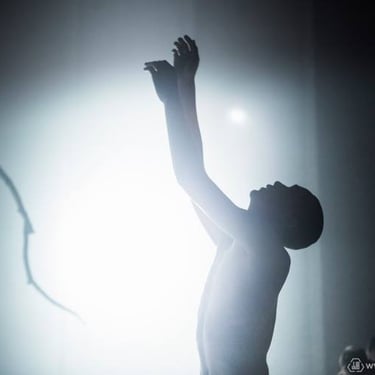
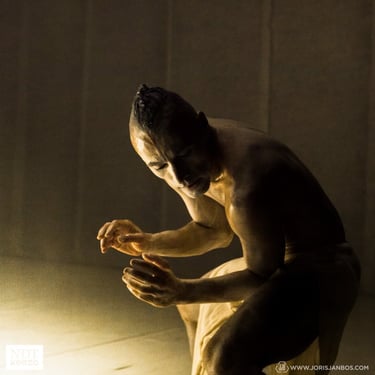
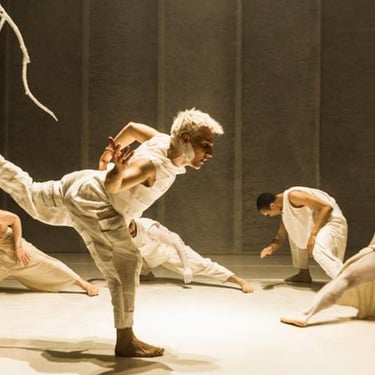

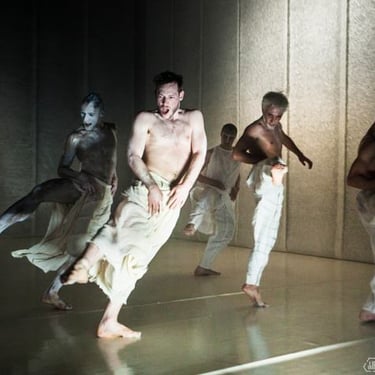
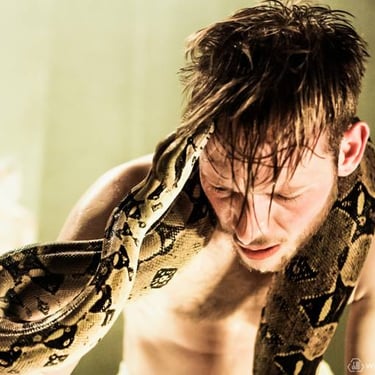

© Joris-Jan Bos
M - or the Midnight Song
Programme Text by Samir Calixto
M... Mensch.
Or purely Myth.
But the main significance of the title M comes actually from the Midnight Song, a poem extracted from what is probably Friedrich Nietzsche’s most influential work: Thus Spoke Zarathustra - A Book for All and No One. It says:
These are the same lines used by Gustav Mahler in his third symphony, as a result of his flirtations with Nietzsche's philosophy. Although much of their visions about metaphysics and spirituality diverge, there seems to be a common ground shared by these two iconic figures. This can be observed in the deeply 'life affirmative' qualities found in both the timeless essence of Mahler's adagios as well as in the pursuit of an uncompromising, non- nihilistic quest for truth in Nietzsche's book.
Thus Spoke Zarathustra is an all-encompassing piece of writing, a complex philosophical/ poetical work that places the seeker of truth (represented by Zarathustra as the archetypical figure of the sage) in the centre stage. Themes like the death of God, the often misunderstood concept of the ‘Übermensch’, the eternal recurrence, the will to power and many others abound throughout its pages. The book introduces us to an ocean of aphorisms.
For this reason, since the embryonic phase of M it became necessary to define its focal points. Almost inevitably, it became clear that it was from the inherent wisdom of the body that this performance could draw its zest, side by side to the poem mentioned above. Nietzsche's idea that within the miraculous mechanism of our bodies we can find the potential of awakening and transforming the individual through vigorous and profound movement,(let op komma) became then the creative north in our creative process.
“If there is to be art, if there is to be any aesthetic doing and seeing, one physiological condition is indispensable: frenzy. Frenzy must first have enhanced the excitability of the whole machine; else there is no art.”
The insights of Nietzsche often aim to annihilate the enslavement of the instincts by the mind, and therefore embrace the importance of one's touch with the body as a gateway to all truth. This proposes a state of unity which opposes to our contemporary idea of separation between mind, body and soul. Apparently contradictory elements such as order and chaos must then coexist – like the ambivalence of the Apollonian and the Dionysian spirits so thoroughly explored by the philosopher throughout his oeuvre.
This vision relates directly to many ancient eastern philosophies (like Zen or Tao), currents which are devoid of any dogmatic religious form. They embrace life's paradoxes, facing all its aspects of it as inseparable: 'beyond good and evil'. Both Nietzsche and Mahler shared some interest in such philosophies - a fact that unites them again in the concept of this choreography. Hence also the aesthetic choices around the piece, proposing a space where western and eastern understanding of life meet. A blank, almost mythic space older than man himself, where all things can be reviewed and transcended, embracing life's ambivalences.
Much could still be said in the light of this vast theme, but to do so would be to contradict the very purpose of creating this work: to give back to the bodies and to the instinct their own philosophic content, when intellectuality empties itself and words can never suffice.
We invite you to engage your senses tonight in this attempt of returning to us all what is primal, our right by birth of being one with our bodies, minds and spirits, our native right to continue our constant search despite living in times of forged certainties and false securities.
Like Nietzsche many explored this path and sacrificed much so mankind could continue to do so. Tonight you will see our homage to their spirits on stage, joined by the old serpent of life and wisdom, in a rite where the concepts of past or future cease to be relevant. For us, all that matters in this whole hour, five minutes and twenty three seconds on stage is to touch what truly lies beyond our exercise of being “human, all too human”.
Evoe, Bacchus!
